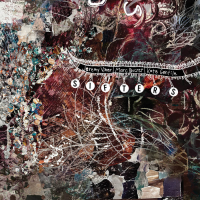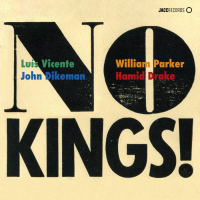Home » Jazz Articles » Multiple Reviews » Jeff Oster: An Emotional Journey into Sound
Jeff Oster: An Emotional Journey into Sound
It's interesting how instrumental music evokes a feeling and how that feeling can be translated into words. It can be very personal, and without lyrics, each person gets to imagine that place the music takes them
—Jeff Oster
One way of defining a musician is to say that it is a person who shapes sound into certain patterns. When these patterns become recognizable, they evolve into genres and suddenly an identity is created. You become a jazz musician, a pop musician, a rock musician etcetera. However, this way of understanding musical identity is sometimes limiting and, indeed, many musicians cannot use categories like these. Instead, they work with different sounds and genres as tools for creating a singular musical personality.
Trumpeter and composer Jeff Oster grew up with jazz. Early on, he played the trumpet while his father sang standards so the jazz tradition is in his blood. This is also something his producer, William Ackerman, guitarist and founder of the record label Windham Hill, recognizes: "Jeffʼs musicianship is steeped in jazz. He cares about chops and knows what good playing is and strives successfully to be that kind of a player. I admire that about him."
However, while Oster has a deep love of jazz, he has played many kinds of music and his sources of inspiration are varied, including Steely Dan, Pink Floyd, Miles Davis and Kendrick Lamar. When asked about his relationship with jazz today, his answer reflects his openness towards many musical expressions:
"As you know, jazz can be expressed in many forms. It's one of the beautiful things about this type of music, the freedom of expression. I don't play in the more traditional forms of jazz, and for whatever reason I've never been drawn towards a bebop, or straight ahead type of playing. People like Terence Blanchard or Dizzy Gillespie have always amazed me with their ability to "flow" over changes like that."
Instead of focusing on the expectations of a certain genre, Oster has found that it is more productive to try to find his own path in music:
"I've learned that my greatest satisfaction in music, and in composition, has come from focusing on what FEELS good to me. As a trumpet and flugelhorn artist, there is a body of work, an expectation of sorts, of what trumpet playing should sound like and embody. I have always felt that my tone and warmth of sound is my strength, and that's where I live in the music I create. I'll never move away from jazz, especially the jazz standards' melodic expression, but I do it in a way that feels like a fit for my style."
For a long time, Jeff Oster has been on his own musical journey, bringing in elements of jazz, rock, world music, fusion and ambient. His musical development can be traced in the four full-length albums he has released so far on his own label Retso Records.
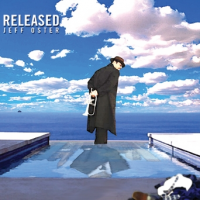 Released
Released Retso Records
2005
The first album from Oster is called Released and begins with "Fool's Gold" where his ethereal trumpet lines break through the mist in an endless landscape. He is complimented by the melancholy piano chords from Philip Aaberg, wordless vocals from Happy Rhodes and the delicate textures of acoustic and electric guitars. The album goes from strength to strength as the next composition "Big Sur" is introduced by Charlie Bisharat's achingly beautiful violin before an enchanting melody unfolds with simple acoustic guitar, beats and washes of synthesizers and Oster's majestic, pure tone in the middle of it all.
"Behind the Veil" is an example of the complex soundscapes Oster is able to build where multi-tracked vocals, tribal percussion and a funky fretless bass groove are combined with great effect. On the other hand, he can create music with very few effects and lots of space. An example is the title track, a subdued ballad, with producer William Ackerman's warm, haunting guitar lines echoing through a composition where the empathic musical dialogue between Ackerman and Oster is enhanced by soft raindrops from the piano and distant tones from an electric guitar.
Ackerman and Oster share a deep emotional approach to music and the ability to combine the seemingly simple and the profound. Oster is able to build complex soundscapes, but he also has a direct emotional quality in his compositions that speaks immediately to the heart.
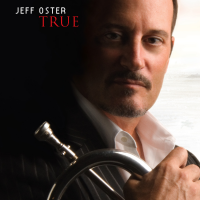 True
True Retso Records
2007
On True, Oster continues to develop his unique approach to composing. Speaking of his compositional approach, he says:
"I almost always start by building up a bed track to play my horns over. To do that, I usually begin by creating or finding loops and beats, or sound effects that resonate with me, and begin to layer them and shape them into a song form upon which I can add melody and harmonies.
I will sit with a bed track once it is in its basic form for a long time, replaying it until I feel and hear a melody that fits. Sometimes I'll do that with my horn in hand, sometimes I'll find it in my head (Prince calls it "taking dictation"), and sing it over and over until I get to my horn, or a piano, to find the notes and play them. Once I've shaped a melody, I'll then work up counterpoint melody lines and harmonies, an arrangement of sorts.
The song then builds from there, and I usually go into the studio and work with real musicians to replace certain loops with live performance. The beauty of that of course is that the songs begin to change and grow, based on what the artists add to the music, and I rarely write out the exact notes for them to play. THAT is the best for me, watching a song bloom like a flower...it's the best!"
True contains an abundance of sophisticated tracks, one of them, "Saturn Calling," literally contains sounds from outer space that are sampled and become part of a cosmic groove with Oster's celestial trumpet blowing into the spheres. Musically, Oster travels around the world. "Mumbai" takes the listener to a colorful Indian landscape with sitar, Indian chanting and funky bass lines while "Tibet" takes a more subdued approach, still with a solid bass groove, but this time the wordless voices are reminiscent of throat singing and electronic beats are added, but the sound is never purely electronic. Speaking of the relationship between electronic and acoustic sounds, Oster says:
"The beauty of being an acoustic player, especially in the warm style that I favor, is that it adds a human element to what is almost always considered to be a processed computer or synth created sound. I have always loved progressive rock groups like Yes, Pink Floyd and groups like Tangerine Dream and the EDM (Electronic Dance Music) genre as well.
Those influences are a big part of my music, and the fact that my horn is the lead over that has actually created a somewhat unintentional "new" genre of music. People seem to relate to that unique quality, and the "heart" that my horn brings to "the machine" seems to resonate in ways I never expected or planned!"
While the successful synthesis of electronic and acoustic sounds is a hallmark of Oster's aesthetic, the power of a pure acoustic sound comes to the fore on the pastoral piece "On One Knee," featuring Philip Aaberg on piano and William Ackerman on guitar. Together the three musicians get to the emotional core of what music is all about.
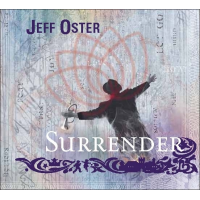 Surrender
Surrender Retso Records
2011
While a composition like "On One Knee" showed the potential of a pure acoustic sound, Surrender reveals the strength of an electronic aesthetic. The album also marks a change in producer from William Ackerman to Bryan Carrigan who also co-wrote eight of the songs. The process of making the album turned out to be a departure from Oster's usual way of working:
"Surrender was created in a completely different way than all of my other albums. Except for a couple of the songs, the entire album was created in the studio with my co-writer and co-producer at the time, Bryan Carrigan. All of my other albums have quite a bit of pre-production, and demos that are quite complex, and are done before I ever set foot in the studio. For Surrender, we'd start the day in the studio with an IDEA, a vibe, and by the end of the day we'd have created a track, and then I went out and recorded the horn parts, as they flowed out. Basically, they were written (and re-written!) as I played them.
I had always wanted to create a downtempo-chill type of album, and Bryan is a master of that genre, both in his sensibility but also in his ability to design sound and tracks. He has several albums of his own out, and you can hear his excellence in shaping tracks like the ones you hear on Surrender. Of course, I added the horns over those bed tracks we created, and many of the sounds we chose influenced the feel of the record. Bryan does quite a bit of sound design and film music work, and he has an amazing collection of almost every sound, instrument and samples that can be imagined, and is a genius at shaping them!
The record also was created at a very reflective and emotionally raw point in my life. It captures the feelings of what I was going through at the time, and there's no accident that the title of the album is what it is. I was yearning for peace, for a calm center to my life at the time, and the music reflects that quite a bit."
The album is built upon a perfect combination of Oster's soulful trumpet and smooth, sophisticated beats and soundscapes. The title track features Diane Arkenstone's delicate voice and titles like "Beautiful Silence," "The Theology of Success" and "Enlightened Darkness" show the existential edge of the music. This is not about forgetting, but rather an opportunity for reflection. It is music that becomes a sanctuary.
 Next
Next Retso Records
2015
On Next, Oster returns to the collaboration with William Ackerman, but there are also new elements. The album features some prominent guests: bassist Chuck Rainey, drummer Bernard Purdie and guitarist Nile Rodgers. When asked whether his music has taken a new direction, Oster answers:
"When you add artists like Nile Rodgers, Chuck Rainey, Bernard Purdie, and so many of the amazing players on Next, how could I NOT be taken in a different direction!
Next represents my moment to be HEARD on a record, my moment to shine. Will Ackerman, Tom Eaton (my co-producers) and I made a conscious decision to have my horn be more out front and on top of the tracks before we ever began recording the album. Most of my records up until Next have had my horns in a more "arranged" type of layered approach. We wanted to have me emerge as a solo artist, to be intimate and present in the mixes. To really HEAR Jeff Oster, and the sound of his horn."
The inclusion of Rodgers, Rainey and Purdie indeed changes Oster's sound, but he also changes their sound. Their contributions are recontextualised and the deep funk wrapped in ambient sounds.
On the album, some of the titles refer to specific places like Sofia and Ibiza. This has been the case before. For instance, Oster's first album mentions Big Sur. Oster comments on his relationship to the places that are mentioned on his albums:
"Some of the places, like Big Sur, are places that I have been to, and love deeply. Most of them however, come from the feel of the song, AFTER the music is created. The titles almost ALWAYS come last and as the songs are put together in sequence, the titles emerge. "Night Train to Sofia" for example comes from the vocals that Melissa Kaplan created, a very Bulgarian feel. Hence, Sofia...SHE came up with that vibe (the song was called #4 when she was working on it :), and then after Chuck Rainey created that slinky bass line, it felt like a train moving through the night.
It's interesting how instrumental music evokes a feeling and how that feeling can be translated into words. It can be very personal, and without lyrics, each person gets to imagine that place the music takes them. For me, I get the added bonus (and responsibility!) to permanently name the songs, based on the feelings and places I imagine as these songs emerge."
Geographical places or not, in the end it is all about feelings. Oster is on an emotional journey into sound and he dares to venture into difficult areas, even the cliché-heavy genre of pop. However, he manages to get something honest and fragile out of a tune like Bonnie Raitt's "I Can't Make You Love Me." Without any pretension, he gets to the emotional core of this beautiful song. The goal is simple: to let the horn express true feelings.
Summing up his musical development and the work producers William Ackerman and Tom Eaton did with his album Next, Oster says:
"The title of the album truly represents where I am today -what's NEXT for me as an artist -to come into my own as a horn player with something to say, that should be heard. The NEXT step in my musical expression and evolution. I think we captured that, along with the help of some of the finest musicians on the planet. I am a very lucky man indeed!"
Tracks and Personnel:
Released
Tracks: Fool's Gold; Big Sur; Final Approach; Behind the Veil; Released; Matt's Mood; As I Live and Breathe; Haleakala; At Last.
Personnel: Jeff Oster: trumpet, flugelhorn, vocals, synthesizer, loop programming, percussion; Philip Aaberg: piano, synthesizer; T. Bone Wolk: bass, acoustic and electric Guitar; Will Ackerman: parlor and acoustic guitar; Happy Rhodes: vocals; Gregory Douglass: synthesizer; Taylor Barefoot: electric guitar; Bryan Carrigan: drum programming, sound design, percussion; Charlie Bisharat: violin; Jeff Pearce: Chapman Stick; Lindsay, Caroline and Lauren Doyle: themselves; Jeremy Mendicino: electric guitar.
True
Tracks: Saturn Calling; This Place; Serengeti: Violet; Tibet; Sounds Like Sunshine; Once in a Blue Moonlight; On One Knee; From the Dreamtime; Mumbai.
Personnel: Jeff Oster: flugelhorn, trumpet, loop programming, synthesizer; Keith Carlock: drums; T. Bone Wolk: electric guitar, bass; Philip Aaberg: piano, synthesizer; Michael Manring: fretless bass; Jan Pulsford_Logic Pro keys, beats and programming; Samite: vocals, mbira; Patrick Gorman: guitar; Eugene Friesen: cello; Bryan Carrigan: guitar, sound design; Derrik Jordan: djembe, cuica, guiro; Melissa R. Kaplan: vocals; Noah Wilding: vocals; Will Ackerman: guitar.
Surrender
Tracks: All That Matters; Você Quer Dancar; Nikki's Dream; The Voice; Essence of Herb; Surrender; Di 4; The Theology of Success; Beautiful Silence; 53 Mirrors; Enlightened Darkness.
Personnel: Jeff Oster: flugelhorn, trumpet, vocals, synthesizers, loop programming; Bryan Carrigan: sound design, synthesizers, drum programming; Diane Arkenstone: vocals.
Next
Tracks: Next; Night Train to Sofia; Gardens of Varanasi; Turn Left at San Pancho; I Can't Make You Love Me; On Mother's Day; Half a Cookie; Ibiza Sunrise; Avenue D; The Mystery of B; Heroes; And We Dance.
Personnel: Jeff Oster: flugelhorn, trumpet, percussion, sound design, loop programming, hand claps; Chuck Rainey: bass; Tony Levin: bass; Ricky Kej: bass, keyboard, synthesizers; Michael Manring: fretless bass; Bernard Purdie: drums; Nile Rodgers: guitar; Scott Tarulli: guitar; Todd Boston: guitar; Shambhu: guitar; Will Ackerman: guitar; Carl Weingarten: slide guitar; Taylor Barefoot: guitar; Jeff Taboloff: saxophone; Vanil Veigas: sarangi; Philip Aaberg: piano; Cathrine Marie Charlton: piano; Britt Thomas Brady: Fender Rhodes, synthesizer, guitar, loops, beats; Tom Eaton: Fender Rhodes, Hammond B-3, keyboards, piano, synthesizer, loop programming, bass, hand claps; Melissa R. Kaplan: vocals; Noah Wilding: vocals.
Tags
Jeff Oster
Multiple Reviews
Jakob Baekgaard
United States
Miles Davis
Terence Blanchard
Dizzy Gillespie
Chuck Rainey
Bernard Purdie
PREVIOUS / NEXT
Support All About Jazz
 All About Jazz has been a pillar of jazz since 1995, championing it as an art form and, more importantly, supporting the musicians who make it. Our enduring commitment has made "AAJ" one of the most culturally important websites of its kind, read by hundreds of thousands of fans, musicians and industry figures every month.
All About Jazz has been a pillar of jazz since 1995, championing it as an art form and, more importantly, supporting the musicians who make it. Our enduring commitment has made "AAJ" one of the most culturally important websites of its kind, read by hundreds of thousands of fans, musicians and industry figures every month.









